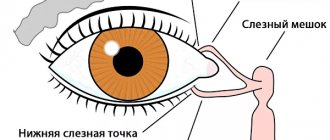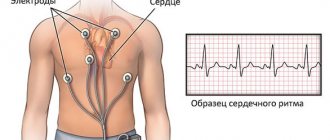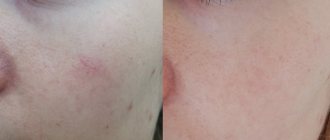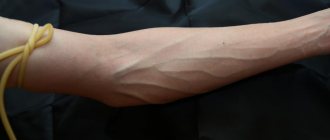The human ear is a self-cleaning organ of hearing. ENT doctors do not recommend deep cleaning. Wax in the ear canal provides protection against infection. The sulfur plugs are washed out by a specialist doctor at the appointment. If you try to remove excess wax on your own, you may find blood from the ear on a cotton swab.
This phenomenon is caused by various reasons and is accompanied by additional symptoms. Bleeding from the auricle looks like a spotting discharge with inflamed mucus, or blood literally flows onto the neck and shoulder.
What can you do at home?
If you have a symptom like this, never try to help on your own. The most correct thing to do is to moisten a cotton swab with a disinfectant (a light solution of potassium permanganate), squeeze it well and loosely tamp the external auditory canal.
Nothing should be instilled, and it is forbidden to take pills until examined by a doctor. At the clinic, notify the receptionist so that you can be admitted for urgent reasons. If your temperature is elevated, your hearing is impaired, or you have a headache, call an ambulance. Requires hospitalization in a specialized department.
Treatment is prescribed after a careful examination of the ear, and if necessary, an x-ray is taken.
All causes of bleeding from the ears can be divided into inflammatory, mechanical and tumors.
How to provide first aid if blood appears from a child’s ear?
If you suspect a traumatic brain injury, place your son or daughter on a flat surface and leave him alone until paramedics arrive. In other cases, you can rinse the damaged area with warm, clean water and treat with an antiseptic composition. Then it is important to make an appointment with an otolaryngologist for the nearest date.
If any object is sticking out of the ear canal, you should not pull it out yourself. Make sure your child doesn't try to do this. Explain to him that the doctor will remove the foreign body himself, and it will not hurt.
Inflammatory ear diseases, symptoms
The ear is connected to the nasopharynx, so any infection in the nose, paranasal sinuses (with sinusitis, frontal sinuses) quickly spreads to the inner ear. In children, more often than in adults, inflammation occurs during a cold, against the background of enlarged adenoids, polyps in the nasal passages.
Acute otitis media
The disease is caused by a viral infection, staphylococci, streptococci, fungi. The severity of the disease depends on the defenses: the weaker the body, the more severe the course. The inflammatory process “corrodes” neighboring blood vessels, ruptures the eardrum that covers the inner parts of the ear from the ear canal, and breaks out along with the serous contents and blood.
Blood discharge from the ear is noticed on the pillowcase in the morning. For purulent otitis media:
- The pain becomes unbearable, it radiates into the throat and covers half of the head.
- Body temperature is increased.
- The hearing on the affected side is impaired.
- The discharge is bloody and purulent with an unpleasant odor.
- Enlarged submandibular and postauricular lymph nodes are palpable.
Characteristic redness of the ear with a boil
Provoking factors for the development of inflammation are:
- hypothermia of the legs and head (in the absence of a hat in the cold season);
- swimming in polluted places;
- prolonged use of headphones to listen to broadcasts;
- chronic infectious diseases in the body (not necessarily ENT organs, carious teeth, adnexitis in women, prostatitis in men are important);
- attempts at hardening by cold dousing;
- decreased immunity due to stress, surgery, or prolonged fasting.
Furuncle of the auditory canal
To protect against dust particles, there are a small number of hairs in the ear canals of the auricle. When an infection is introduced with dirty hands, the hair follicle becomes inflamed, the hole and ear swell.
After pain when touched, constant pain and ear congestion appear. Swelling is palpable. Redness of the hot ear is noted. The boil may open on its own or during treatment. In this case, pus may be discharged with slight bleeding.
Diagnosis of the problem
The doctor conducts a tactile and visual examination and, if necessary, performs an otoscopy , which will identify any damage in the ear.
If chronic purulent otitis is suspected, differential diagnosis of epitympanitis from mesotympanitis using X-rays and computed tomography . fluid samples will be taken for analysis. Thanks to research, the doctor can:
- determine the presence of inflammation in the hearing organ;
- identify the exact causative agent of the infection;
- determine the stage of the process;
- find out if there are any complications.
After making a diagnosis, the doctor will prescribe effective medications.
Mechanical reasons
The easiest way to find out why the victim's ear is bleeding is to examine it after washing it with a warm soapy solution. A common symptom of mechanical damage during fights is abrasions and cuts on the auricle. After a blow, the ear may be red and swollen. The bruising extends to the cheekbone. Induration and pain are determined by palpation.
A lacerated wound to the auricle will require local treatment
Children's attempts to push small objects into their ears should be taken seriously. Such injuries are not just associated with abrasions, but can disrupt the tympanic septum and penetrate into the middle ear. The patient experiences bleeding from the ear canal due to severe pain.
If a victim in an accident bleeds from the ear, one should suspect fractures of the skull bones with the formation of an acute hematoma.
Due to the accumulation of blood in the cranial fossa, bleeding may be delayed. The patient has headaches, dizziness, and tinnitus. The condition is progressively worsening. Bleeding from the ears and nose confirms the severity of the injury. Loss of consciousness and convulsions are possible.
Another type of mechanical impact occurs when divers quickly dive or accelerate their ascent. The eardrum cannot withstand the pressure difference and is injured. Ear bleeding is one of the symptoms of decompression sickness.
Treatment options for bleeding from the ear
The otolaryngologist's actions depend on how serious the case is. If there is a suspicion of a ruptured eardrum or ear cancer, additional diagnostic tests will be required, including CT and MRI. Additional consultations with a therapist, neurologist, neurosurgeon or oncologist will also be required.
In other cases, the otolaryngologist provides assistance independently. If there is a foreign object in the ear, the doctor carefully removes it and treats the damaged area. If the bleeding is caused by a disease, the otolaryngologist prescribes antibacterial, antifungal, and painkillers. It is important to start treatment as soon as possible to prevent other symptoms from developing. This way, the baby will not experience hearing loss and headaches, so he will be able to recover as soon as possible and return to active games with peers.
Bleeding during pregnancy: 3rd trimester
Bleeding in the third trimester is associated with abnormalities of the placenta. This:
- Placenta previa, that is, the location of the placenta on the fundus of the uterus. This usually occurs between 28 and 32 weeks of pregnancy. It usually goes away on its own, but women should exercise caution for the rest of the pregnancy. It's better to go to the hospital and observe.
- Premature abruption of the properly seated placenta, which can occur as a result of a sudden increase in blood pressure or a blood clotting disorder in the mother, as well as abdominal trauma. Placental abruption is a condition in which the placenta is partially or completely separated from the wall of the uterus.
- The release of the mucus plug covering the cervix, which may be stained with blood.
3. Symptoms and diagnosis
The main symptom, in fact, is reflected in the title. The amount of blood, depending on the reasons, can vary - from one drop to a noticeable trickle.
Likewise, the color and composition of the discharge may vary - pure scarlet blood, bloody cloudy mucous fluid, pus streaked with blood, etc.
Only an otolaryngologist can establish the causes, assess the degree of danger and prescribe additional diagnostic procedures. In addition to standard otoscopy, radiography, CT or MRI, laboratory smear analysis, and consultations with specialized specialists may be required.
About our clinic Chistye Prudy metro station Medintercom page!
Bleeding early in pregnancy
It is estimated that one in three women will bleed during pregnancy. Most often appears at the beginning of pregnancy. In the first trimester, bleeding is usually caused by:
- implantation of the fertilized egg into the wall of the uterus.
- date of menstruation. It happens that during pregnancy, light bleeding occurs at the moment when your period should begin. It may be that you experience abdominal pain or other symptoms that accompany your period;
- cervical disease such as erosion or polyp. Then the most common bleeding is after sexual intercourse or a gynecological examination;
- hormonal deficiency, usually a lack of progesterone. To find out, you should take a blood test to determine its level. If the result confirms the suspicion, the pregnant woman needs to take duphaston or lutein (usually until the 16th week of pregnancy);
- ectopic pregnancy, when the embryo implants outside the uterine cavity, most often in the fallopian tubes. This is a condition that threatens the health and even life of a woman. If you experience abdominal pain, usually on one side, see your doctor as soon as possible. Symptoms occur between the fourth and eighth weeks of pregnancy;
- Molar pregnancy, which is a rare complication. This means excessive growth of the tissues from which the placenta develops, which interferes with the development of the embryo. An ultrasound should be performed to confirm the diagnosis.
- miscarriage, i.e. termination of pregnancy before 22 weeks. What could indicate them? Heavy and prolonged bleeding, painful cramps in the abdomen, a feeling of pressure in the lower abdomen. In such a situation, it is necessary to go to the hospital as soon as possible. Every third pregnancy ends in miscarriage by 12 weeks.
Technique for performing anterior nasal tamponade
Anterior nasal tamponade is carried out after preliminary anesthesia through the use of local anesthetics - lidocaine, novocaine and others. The algorithm of actions is as follows:
- The patient is seated with his head slightly tilted forward. If this position cannot be assumed, he lies on his side or on his stomach.
- The patient picks up a tray designed to collect blood, or it is placed on an oilcloth next to the patient’s face.
- The nasal cavity is cleared of blood clots, and the accumulated blood should be spat into a tray.
- The mucous membranes of the nose are treated with an anesthetic.
- Turunda, about 70 centimeters long and 1-1.5 centimeters wide, is moistened with a three percent solution of hydrogen peroxide or soaked in petroleum jelly and hemostatic agents.
- Using tweezers, the doctor grabs the end of the turunda, making an indentation of 4 centimeters.
- Turunda is inserted into the nasal cavity to the posterior section.
- By placing a turunda from the bottom of the cavity to the nasopharynx in the form of an accordion, anterior tamponade of the nasal cavity is performed.
- If there is bleeding on both sides, bilateral nasal packing is performed.
- A sling-shaped bandage is applied to the nose.
- Used materials are disinfected and, if necessary, disposed of.
Atheroma
The origin of atheroma is fundamentally different from lipomas. Atheroma develops from the sebaceous glands of the skin. For various reasons, the gland duct becomes clogged, secretion accumulates in the gland, which gradually begins to increase in size. Atheroma is defined as a small (from 0.5 to 2 - 3 cm) formation, which always rises somewhat above the skin and is always fused to it (i.e. the skin above the atheroma does not move), and can grow slowly. Atheroma always has a capsule and contains atheromatous masses resembling crushed lard.
Because The atheroma is connected to the external environment by a duct; there is always a threat that it will become infected through the duct and suppuration will occur. In this situation, moderate pain appears in the area of the previously “quiet” atheroma, the formation quickly (over several days) increases in size, redness appears around it, and body temperature may rise. Suppuration of atheroma requires urgent surgery.
Structure of the hearing aid
The hearing aid is a complex system that is responsible for a person’s ability to hear sounds. Bleeding can occur in any part of it. Therefore, before finding out the cause of the problem, it is necessary to understand the structure of the organ. It is usually divided into several main zones:
- External part . Consists of the auricle and ear canal. Its main function is to receive the sound signal and direct it to the middle part of the system. The auditory canal is tortuous. It consists of the helix, tragus, antihelix, antitragus. Its surface is lined with a specific fabric. Inside it are glands that produce a secretion that protects the ear from infectious, thermal and mechanical damage.
- Middle part . It includes the auditory tube and the tympanic cavity. Its key task is the transmission of vibrations. This becomes possible thanks to the system of tiny bones that make up the eardrum.
- Inner part . Represented by the vestibular analyzer. With its help, the body manages to maintain a given position in space; it also helps regulate all human movements.
All parts of the auditory organ are very sensitive and easily damaged. This is especially pronounced in childhood, since the immune system of children does not function at full strength and is not able to protect itself from the effects of negative factors.










